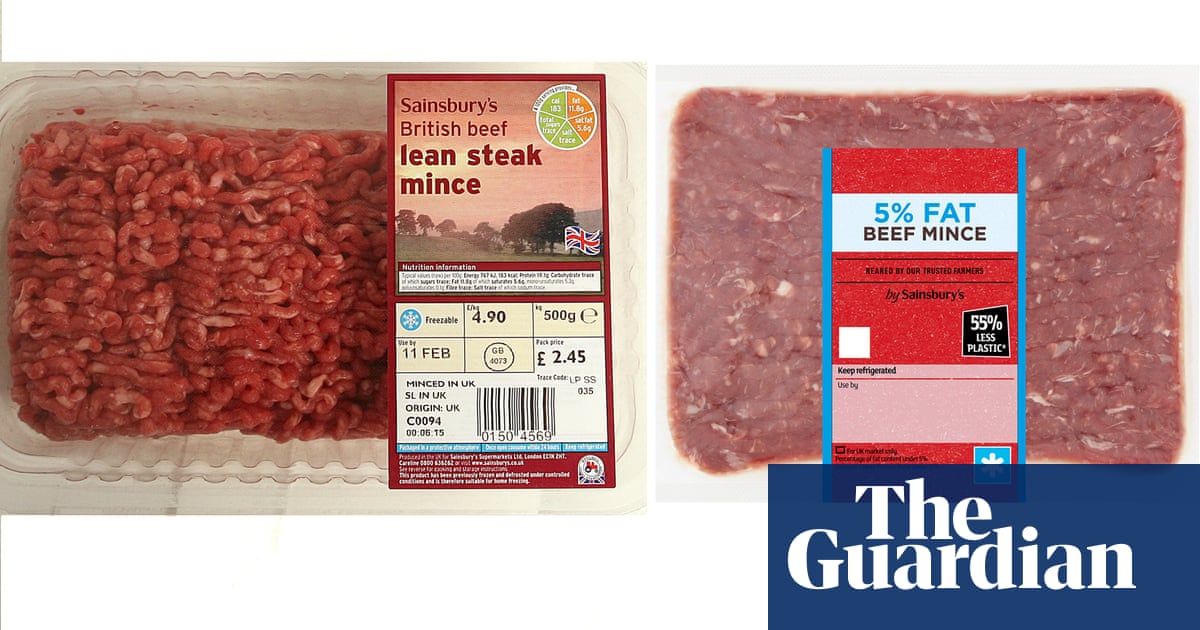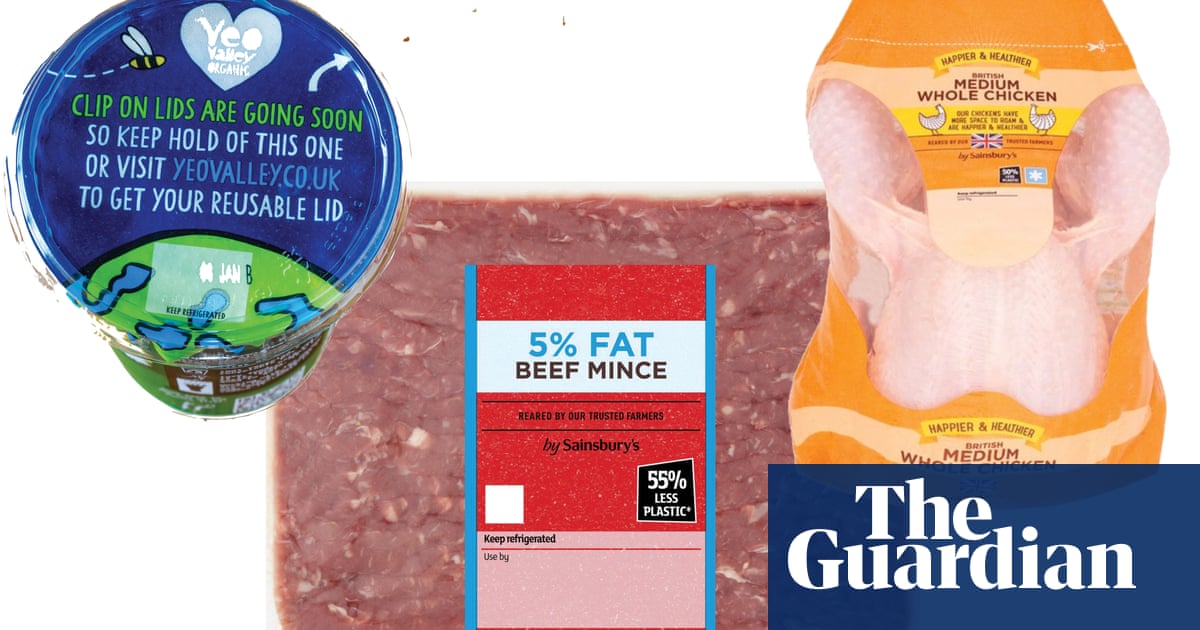
Sainsbury’s has said it is determined to make more “bold moves” to cut plastic and defended its new packaging for mince that shoppers have criticised as “very medical”, “too compressed” and “vile”.
The supermarket said last month it was the first UK retailer to vacuum pack all its beef mince, part of the retailer’s efforts to halve its use of plastic packaging on its own-label products by 2025.
Responding to the criticism, Sainsbury’s said the new packaging would more than halve the amount used per pack helping to save 450 tonnes of plastic a year, “without impacting taste or quality”.
Richard Crampton, Sainsbury’s director of fresh food, said the mince in the new packets was “exactly the same out of the same machines” as that in the previous ones. “The product is absolutely identical,” he said.
However, some shoppers have reacted with dismay on social media. One said the mince beef packaging “feels very medical – like I’ve just bought someone’s kidney to cook at home”. Another said it was “too compressed and does not look appetising”.
A third said the packaging method “turns the mince into more of a slab of, what looks like, ‘meat’ grown in a lab”. One called on Sainsbury’s to “do a quick U-turn”.
Vicki Cole, a Sainsbury’s shopper from Huddersfield, told the BBC: “They’ve sucked all the air out and squashed it so it plopped out of the packet and into the frying pan in a big rectangular clump.
“As I started breaking it up with the wooden spatula it was staying in big balls that were cooking on the outside but not the inside.” She said that unless Sainsbury’s changed the packaging she would no longer buy its beef mince.
Another shopper tweeted: “I have gone back to Aldi on mince since this … It’s so hard to get out the packet, looks disgusting after a day or so even if before use date. Vile.”
Crampton said that because it was vacuum-packed, the mince did require a different style of cooking – with more stirring to break up the mince in the first minute in the pan – and this was now explained more clearly on the packets and on shelves.
He said the change had not affected the level of complaints to its helpline, sales or market share and Sainsbury’s was determined to stick to the vacuum packs for its mince as they were helping reduce plastic use. “It’s something we believe in corporately and morally,” he said.
Reducing packaging on fresh food, such as meat and fish, was a priority for Sainsbury’s as it accounted for about a fifth of its plastic use, Crampton said, adding that the retailer would be taking “lots more bold moves” to cut back on packaging further to meet its reduction target. “I can’t see us veering from this path.”
Sainsbury’s has already changed the packaging on its steaks, replacing plastic trays with a board, and on fresh chickens, which now come in a bag without a plastic tray underneath, and there were plans to make alterations on fish, sausages and other foods, although Crampton said these would not necessarily use vacuum packs in the same way as the beef mince.
Some shoppers said the new packaging was not as easily recycled as the previous version. Because they are made from “flexible plastic” the packs are not accepted in most councils’ kerbside bins and must be taken to specialist collection points in stores including Sainsbury’s.
Crampton said that having to take the packaging into stores meant it was not as easy to recycle, but added: “We felt on balance it was still the right thing to do.”
Some shoppers said on social media critics were being too fussy. One said: “Yes, it feels a bit different but it’s still mince and still tastes fine.”
Another said: “I’ve bought it and I’ve used it. The packaging has made absolutely no difference to the product but the planet benefits greatly.”
Catherine Shuttleworth, at the retail advisers Savvy Marketing, said that while trying to reduce plastic was positive “not every sustainability improvement necessarily improves the product presentation”.
She said retailers should test products with customers to see how they might adapt to the changes or risk losing sales.
“Shelf appeal matters,” she said. “When you’ve been making ‘spag bol’ once a week for 20 years the last thing you need is new instructions on how to cook mince.
“We know that shoppers want less packaging but they aren’t prepared to compromise too much – maybe this is a step too far from some but in the challenge of saving the planet we’ve all got to accept compromises.”












